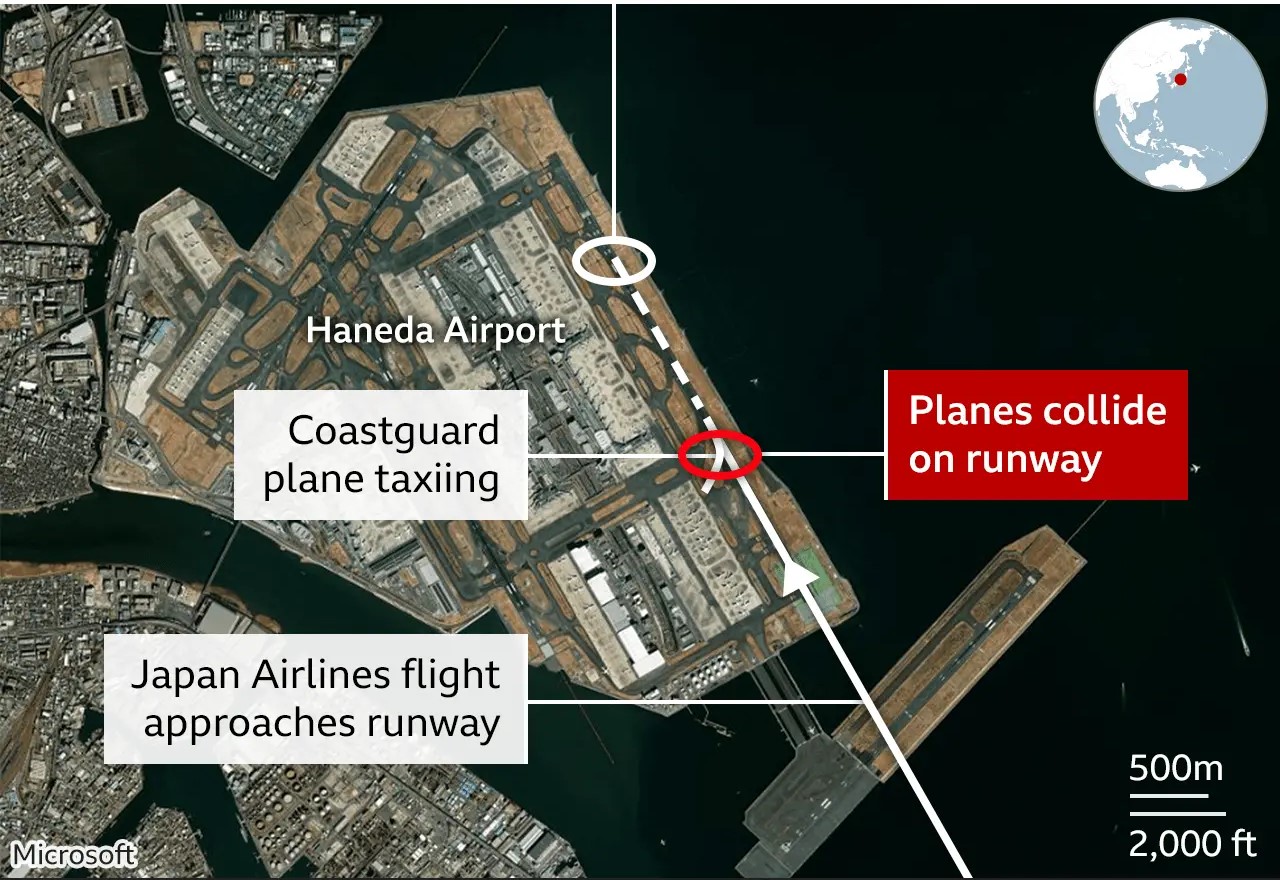Japanese authorities have reported that the Japan Airlines Airbus A350 that collided with a Coast Guard turboprop at Tokyo Haneda airport was cleared to land. However, the turboprop was only cleared to taxi to a hold short point.
The JAL Airbus A350-900 with registration flight JA13XJ was performing flight JL516 from Sapporo (CTS) to Tokyo (HND) with 379 passengers and crew members on board the aircraft. Whereas, the Coast Guard Bombardier DHC-8-300 with the registration code JA722A was supposed to depart Haneda Airport runway 34R, just after the JAL A350 landed.
However, at 5:47 PM on Tuesday, both aircraft were on the runway at the same time resulting in the fatal collision. Even though all 367 passengers and 12 crew members of the JAL A350 were able to evacuate from the scene, five of the six crew members on board the Coast Guard aircraft lost their lives.
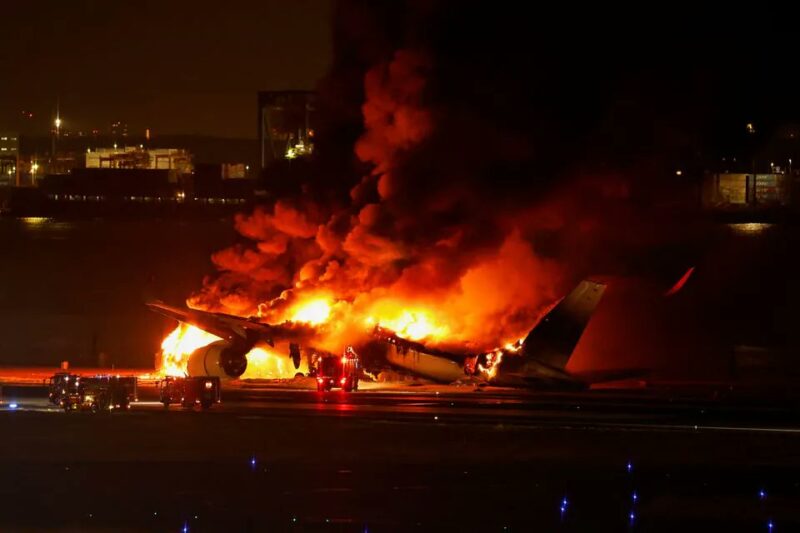
Probable Causes and ATC Communication
Japan’s Ministry of Land, Infrastructure, Transport, and Tourism has released a transcript of the air traffic control audio communications between the two aircraft and Haneda’s tower. The transcript indicates that the Coast Guard aircraft was only cleared to taxi to the C5 intersection hold short point, and not enter the runway 34R.
Meanwhile, the JAL A350 was cleared to land on runway 34R, so the A350 continued its approach and touched down where it collided with the Coast Guard aircraft.
The captain of the turboprop plane claimed to have entered the runway with permission, as stated by a Coast Guard official. However, it is worth noting that an official from Japan’s civil aviation bureau told reporters that no indication was found in those transcripts that the Coast Guard aircraft had been granted permission to take off.

“The transport ministry is submitting objective material and will fully cooperate with the … investigation to ensure we work together to take all possible safety measures to prevent a recurrence.”
Transport Minister Tetsuo Saito.
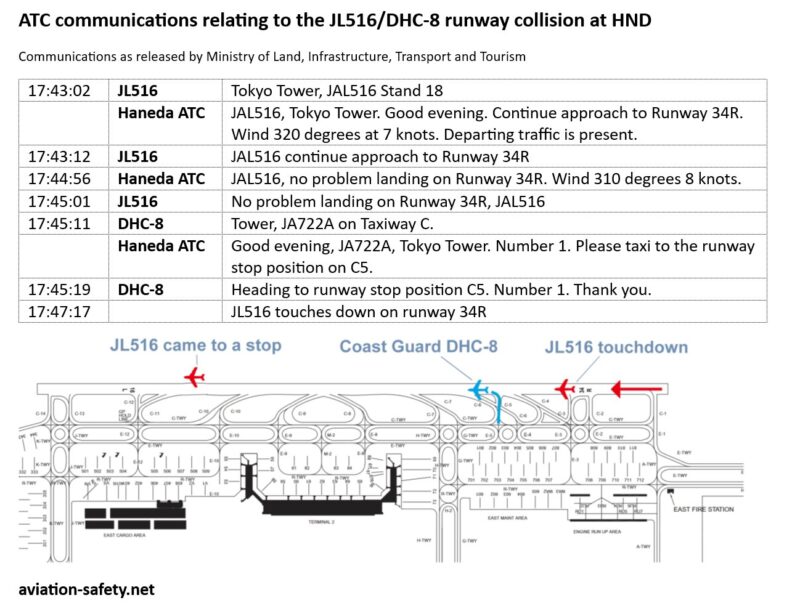
Contrary to the information provided by the sole survivor among the six crew members, the transcripts seem to contradict the coastguard aircraft’s captain’s assertion that he had received clearance to access the runway that the JAL A350 was approaching.
How the Coast Guard aircraft ended up on the active runway is quite concerning as the instructions given by the ATC were clear and the crew also responded accordingly. The investigations have just commenced, and there is still uncertainty regarding the circumstances of the crash, including the details of how the two aircraft found themselves on the same runway.
Additionally, evidence uncovered by the BBC indicates a potential issue with the red lights that warn taxiing aircraft at the designated holding point. Nevertheless, experts emphasize that alternative visual cues, such as painted markings, could serve as indicators for aircraft to ascertain their stopping point before reaching the runway.
Police Inquiry
Simultaneously, Tokyo police are investigating the potential role of professional negligence in the fatalities and injuries, as reported by various media outlets, including local newspapers.
A dedicated investigation unit has been established at the airport by the police, who intend to conduct interviews with those involved in the accident. The spokesperson refrained from disclosing whether they were specifically examining any indications of negligence.
The coexistence of parallel air crash investigations has previously sparked concerns due to potential tensions between civil safety inquiries, which depend on open discussions of errors to enhance safety measures, and police-led inquiries, primarily focused on assigning blame.
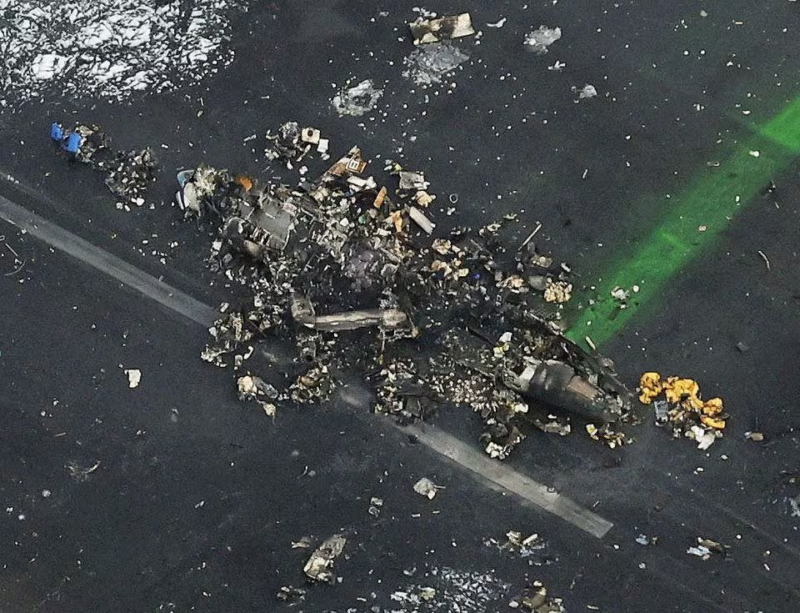
The Japan Safety Transport Board (JTSB) is leading the investigation, with the involvement of agencies from France (where the Airbus jet was designed) and the U.K. (where its Rolls-Royce engines were manufactured). Additionally, in Canada, where the Coast Guard Dash-8 was originally built by Bombardier, the TSB safety agency has expressed its intent to participate.
Evacuation Hurdles
Analyzing the evacuation footage, it’s commendable that passengers adhered to protocol by leaving their carry-on items behind, a critical step that can determine survival. The cultural inclination in Japan to follow the rules likely played a pivotal role in this adherence.
However, the cabin crew faced challenges during the evacuation. The emergency announcement system reportedly malfunctioned during the evacuation, prompting flight attendants to scream out loud verbally and use megaphones. An in-depth inquiry into this breakdown has been launched.
Furthermore, only three out of the eight emergency exits were utilized, as the crew carefully assessed which exits could be safely employed based on the fire’s location. Japanese media have reportedly described the evacuation as a “Miraculous 18 Minutes”. Passengers were off much quicker, but the pilot remained inside for around 18 minutes.
Japan Airlines Flight JL516 crew was praised for their swift execution of the evacuation plan. Evacuating an A350 immediately amid a non-functional public announcement system, and with only three exits in operation underscores the broader role of flight attendants in ensuring passenger safety, beyond their service-oriented responsibilities.
All passengers and crew members were evacuated within 18 minutes. But the A350 was engulfed in flames and burned for more than six hours, the airline said.
Japan Airlines Losses
On Thursday, Japan Airlines announced anticipated losses exceeding $100 million following the destruction of one of its new planes.
As investigators thoroughly examined the charred wreckage, transport authorities initiated an inquiry into the circumstances surrounding the entry of the Coast Guard plane onto the runway during the A350’s landing. Concurrently, media reports indicate that the police are exploring potential professional negligence in connection with the incident.
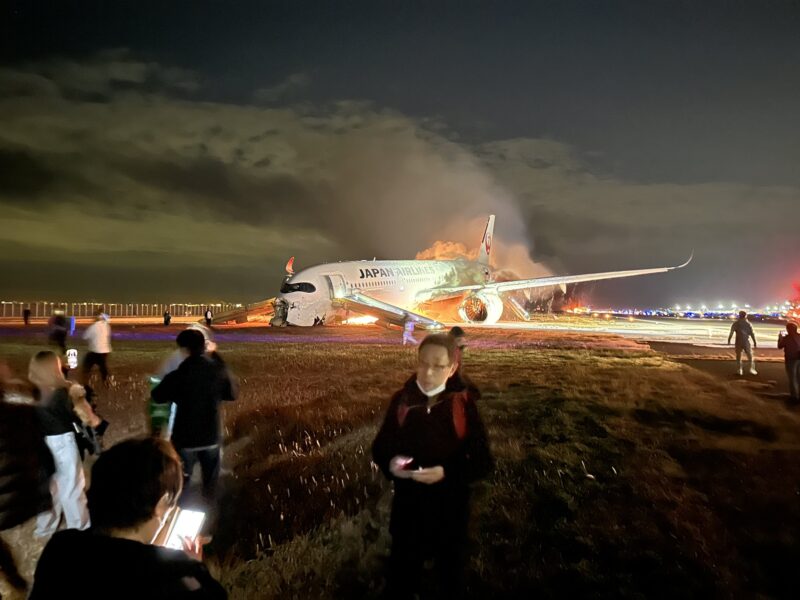
Feature Image via BBC


